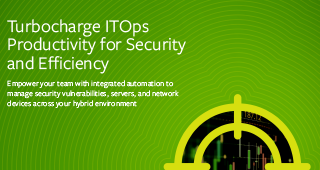As opposed to running an operating system (OS) on every physical desktop computer in an office, a virtual desktop infrastructure (VDI) is a data center technology centralizing many desktop environments onto one server. The virtual desktop within the VDI lives on virtual machines (VMs) on this server, and the VMs deliver the desktop images to endpoints such as PCs, tablets, or other devices over a network.
A user accessing a VDI solution from such an endpoint can manage the OS as well as the associated data and applications as if they were using a local desktop, but without the need for specific hardware. When they sign off, the VDI can save all of their data for the next time the user returns on any device. Alternatively, the VDI can change to a random desktop for the next user if saving is not necessary.
VDI with host-based VMs provides an alternative to other types of virtual desktop delivery, such as local desktop virtualization and hosted shared solutions. It also no longer comes with the extremely high price tag once associated with it due to the rise of hyperconverged infrastructure (HCI) solutions. The scalability provided by HCI means VDI can provide various benefits and convenient solutions for companies of any size.
VDI vs Desktop Virtualization
While VDI is a type of desktop virtualization, the two terms are not synonymous. Desktop virtualization is the general idea of separating desktop environments from the hardware that accesses them by running a VM on a desktop computer. But not all other types of desktop virtualization use host-based VMs in the same way that VDI does.
VDI uses a data center and VMs to supply hosted desktop images to end clients. Other types of desktop virtualization, such as desktop-as-a-service (DaaS) or local desktop virtualization, might utilize the cloud or other methods to accomplish the task.
VDI Components and Structure
Within a VDI data center, you will find a hypervisor, VMs, and a connection broker all working together. The hypervisor decouples the OS from the physical hardware, creating the VMs that host multiple virtual desktops from the one centralized physical server. This partitioning process is called server virtualization.
The resulting VMs are a type of software that forms an integral part of VDI technology. They provide and manage virtual desktops in the VDI. A VM might also be called a guest, since the computer environment that creates it is called a host.
Although the VMs in a VDI provide the same functionality that you get from physical computers, they are computer files running on physical servers. They can run an OS and applications, while providing the benefit of being simple to manage and maintain.
A connection broker is a software gateway that then connects desktop users to desktop instances upon request. In this part of the process, the connection broker authenticates each end user regardless of the device they are using. As users connect to desktop instances via the connection broker, the host server performs all processing. Users can thus access virtual desktops from anywhere and on any device.
Types of Deployment
VDI provides two options for meeting different needs in terms of employee tasks: persistent and nonpersistent deployment.
Persistent
This type of VDI deployment assigns a specific standardized desktop to a user on their first login to the VDI environment. It then persistently connects the user to the same desktop at each subsequent login. By connecting to the same one each time, any changes that the user makes to data and applications are saved. Through this method, users can personalize their environment, making it easier to work with fast-paced and complex digital workflows where they need to pick up where they left off each time they log in.
Nonpersistent
A nonpersistent deployment does not save changes and can connect the end-user to either to the same or a randomized desktop from the pool at each login. It is an ideal solution for frequent one-time access needs,but does not serve users who need a virtual desktop that acts as a consistent and personalized work environment. Shift, task, and kiosk workers who do not need to save to the desktop will find nonpersistent deployment ideals, and the IT team will benefit from simplified maintenance and management.
Benefits of VDI
The primary benefits of VDI include enhanced mobility, remote access, improved security due to centralization, and potential cost savings. The centralized nature of VDI allows employees to access their desktop from any device in any location, granted they have a stable connection. With an increasing number of employees working from home, traveling for work events, and using multiple devices, such ease of access promotes productivity for a range of workers.
At the same time, security and maintenance do not suffer since the various devices don’t house any of the sensitive data to which employees connect. IT teams can also implement secure remote access and single sign-on (SSO) solutions to help avoid silos, mitigating the risk of unauthorized logins. Additionally, changes such as software updates and patches are easy to apply across all desktops via the central data center, ensuring everyone is up to date.
Server-based processing in a VDI also leads to a decreased need for powerful physical processors. Because VDI requires less hardware to perform the same tasks, it is comparatively inexpensive. Rather than needing new and cutting-edge hardware, a user can access a VDI from repurposed PCs that are already lying around.
Popular Uses
Optimal situations in which to implement VDI include remote work, bring-your-own-device (BYOD), and task or shift work. The type of VDI deployment will depend on which of these applications you have in mind for your company.
Remote work in particular is a growing trend in the modern workplace where employees increasingly work from places other than a designated office. As they take their work on the go, either at home or traveling to other areas, they need to be able to access several applications remotely. A VDI facilitates convenient and secure remote access for these employees, boosting productivity and worker happiness in the process.
It also allows various employees in different locations to maintain a consistent experience across all their devices, including the employee’s personal devices in BYOD situations. Workers can work comfortably on devices they are familiar with without the need to lug around extra work computers, but still have access to everything they need to stay on top of their work.
On the other hand, some workers perform relatively limited tasks or only work in shifts on specific devices. Using nonpersistent VDI deployment can simplify such task and shift work by offering one-time access to the appropriate desktop without the need for advanced data center management.
Drawbacks
The main limitations of VDI include significant security requirements and potential performance issues. While centralization can improve overall security, it is still an area that requires great attention and proper management. The authentication of end clients needs to be rigorous, and IT will need to stay on top of managing and updating the OS images.
As for performance, VDIs have typically lagged behind the performance of local systems. They are not so far behind today, but a small gap remains. VMs are inherently less efficient and run a bit slower than physical computers, but this might be a sacrifice your company is willing to make for the other benefits offered by VDI. Mitigating the performance issues by solving technical problems involves regular performance-tuning as well as reviews of the deployment methods.
How to Implement VDI
Larger companies with over 100 desktops should consider a hyperconverged infrastructure (HCI) environment. HCI offers high performance combined with scalability and is largely to credit for the reduction in VDI costs over time.
For both large and small companies, best practices include knowing your business needs and preparing for them. Become familiar with typical demand spikes and peak usage times to provide appropriate performance capacity ahead of time. Tools for performance monitoring can help you understand the resources that each virtual desktop should be capable of handling.
Before implementing VDI, understand the needs and preferences of the end-users. Choosing between persistent and nonpersistent deployment will depend on whether users need to be able to customize desktops. After selecting the deployment type and provisioning other resources, perform a pilot test to ensure everything runs smoothly.







